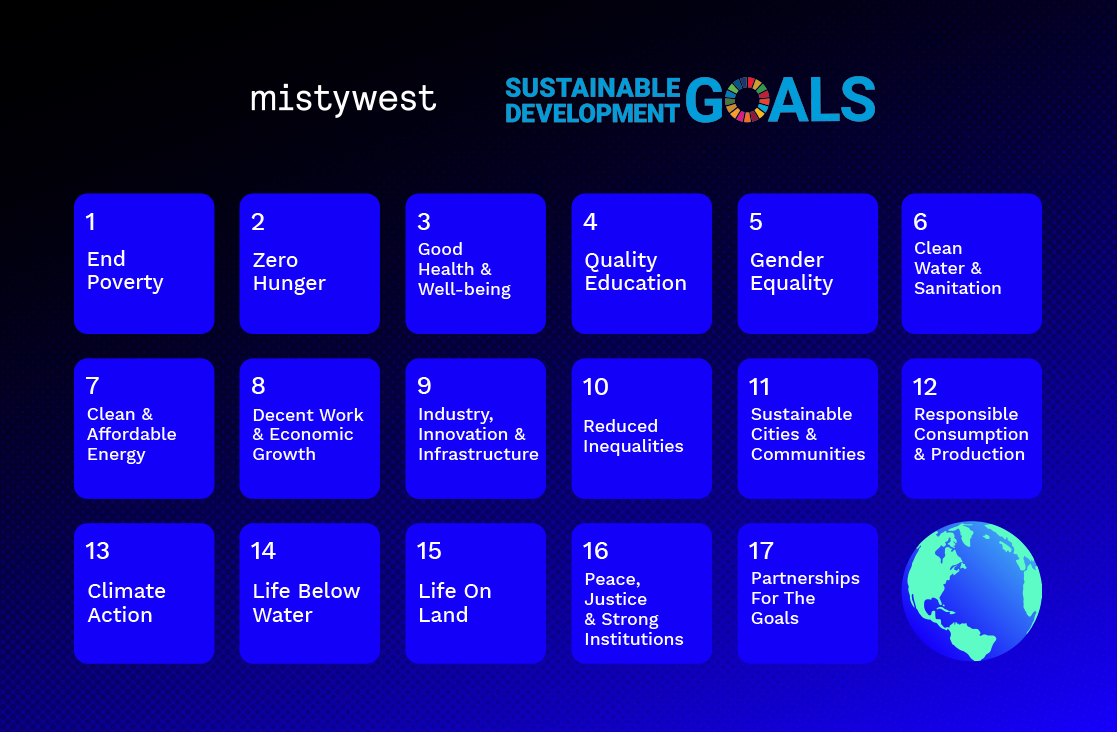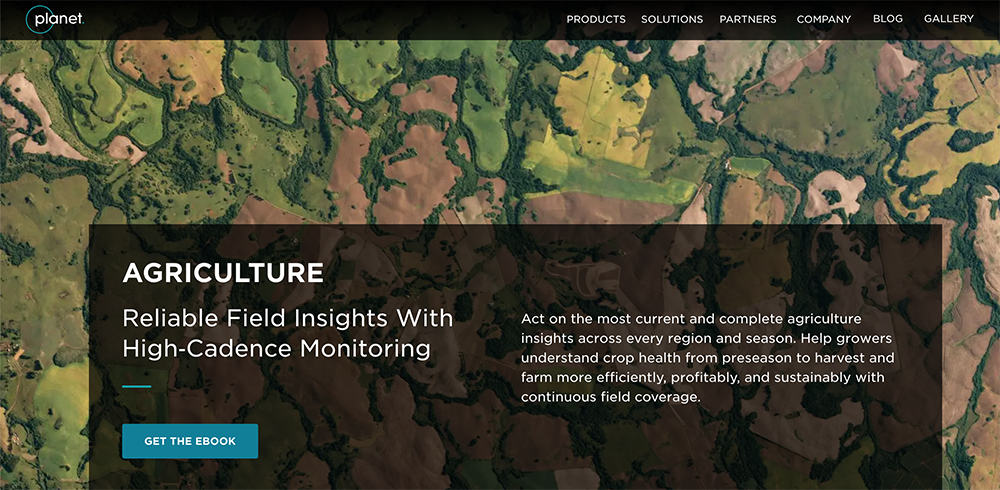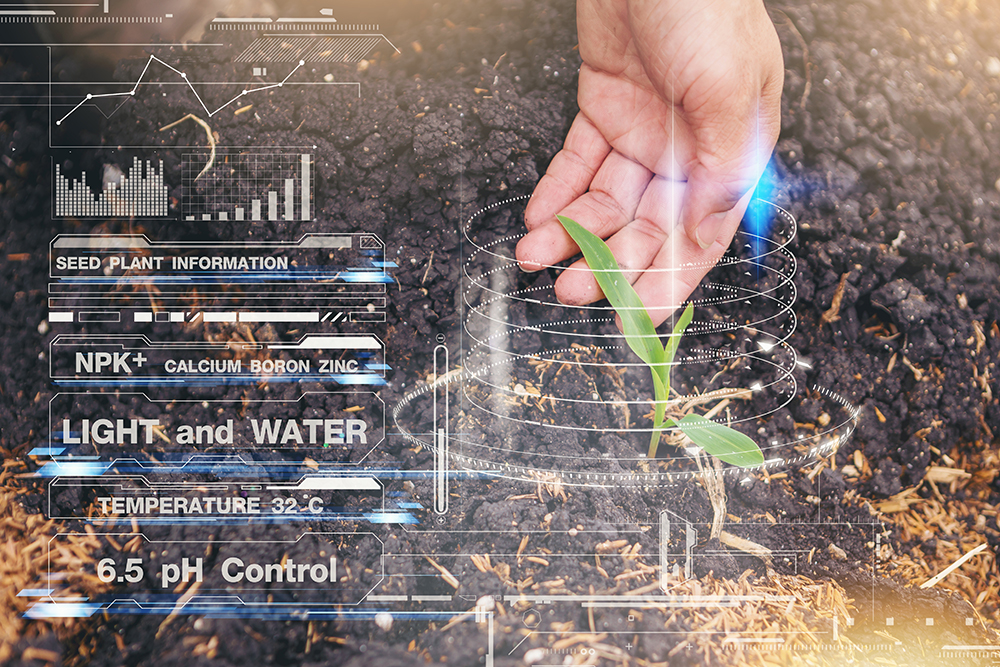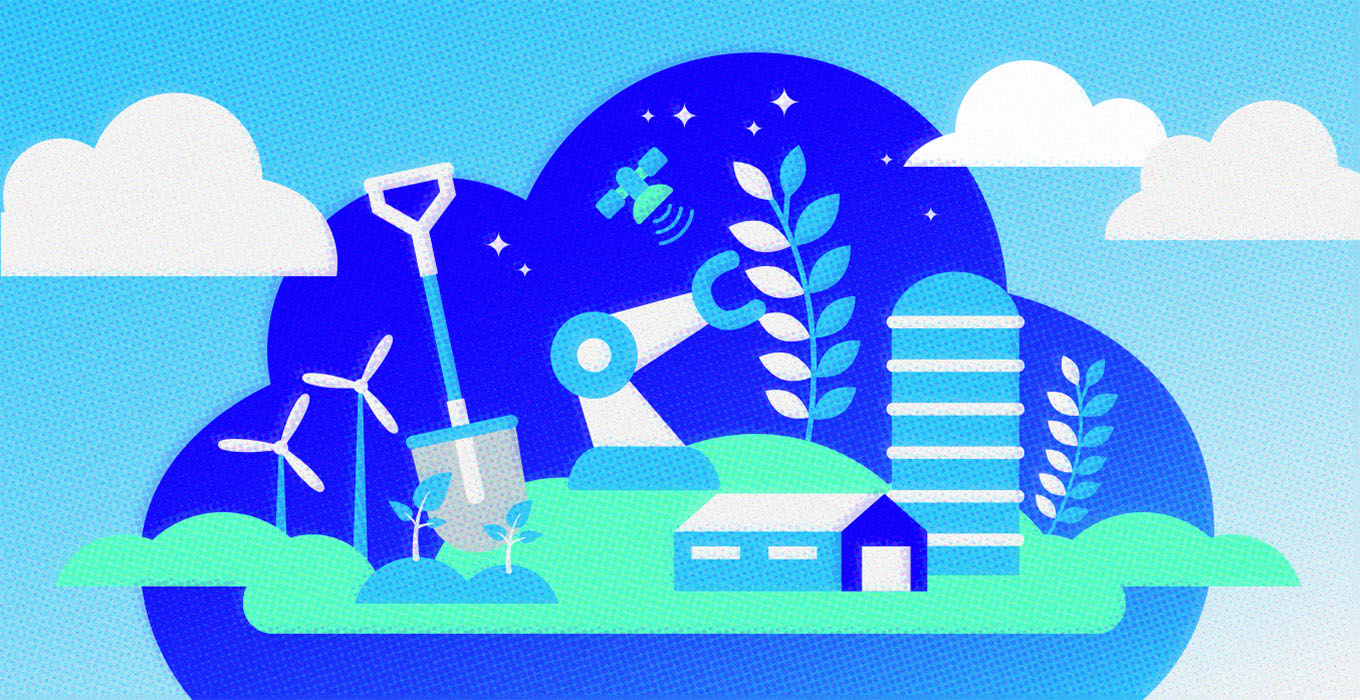Why is agriculture such a big deal?
Agriculture is one of the most negatively impactful industries accelerating climate change – and the only industry that truly has the ability to replenish itself and serve as a climate change reversal agent. The agricultural industry and the technical innovations developed in agri-tech will play a critical role in creating a sustainably abundant future and achieving the UN’s Sustainable Development Goals by the year 2030 – all of which are part of MistyWest’s mission and purpose.
Agriculture faces the pressing mission of improving earth’s ability to capture atmospheric carbon (alongside with reducing our carbon emissions); a mission so pressing (and interesting) that a recent poll of the MistyWest team placed working on carbon capture systems as the number one impact area where Westies want to see our work. (This was closely followed by robustness of the food supply chain and improved effectiveness of health care).

The UN’S Sustainable Development Goals
The unique position of agriculture and agri-tech, and my role as a technologist who is new to this industry, is what led me to attend the World Agri-tech Innovation Summit in March, where I learned how critical it will be to leverage agriculture as a system for sequestering carbon. I’ve captured my biggest takeaways from the Summit in this post.
How serious is this carbon capture problem?
To get a sense of how impactful agriculture can be as a carbon capture technology, it’s important to get a sense of the makeup of the earth’s surface:
- Inhabitable land makes up roughly 21%
- The remaining 79% is ocean, glacier and barren land
Of this inhabitable land:
- 50% is used for agriculture
- 48% is forest and shrub brush
- 1% is used for urbanization
- The other 1% is freshwater rivers and lakes
It is well understood that forests are the earth’s best natural carbon-sequestering system. However, wildfires and clearcutting continue to spread, and with a growing population of 7 billion (and counting), our ability to meaningfully reverse the planet’s deforestation in the near term is slim. The most readily available option for mitigating the negative impacts of deforestation is to increase agricultural land’s ability to serve as a carbon sink.

Because most people reading this live in urban environments, it’s easy to overestimate what percentage of the earth is covered by urbanization – but agricultural land dwarfs urbanized land by 25 times! Rooftop gardens are great for making cities nicer to live in but in terms of addressing climate change, increasing the ability for farm land to capture carbon is the much larger lever to pull.
What is being done to capture carbon?
The path forward to improving earth’s ability to capture atmospheric carbon is to incentivize carbon sequestering through carbon offset markets, much the way the forestry industry has been doing for decades. During the Summit’s session “Making Carbon Farming a Reality for the Farmer”, it was concluded that the key barrier to making this a reality seems to be trust in the quantification of soil organic carbon (SOC) levels – a measurable component of soil organic matter (SOM) that can be sequestered to reduce atmospheric carbon dioxide.

Planet.com satellite observation
Satellite imaging groups such as Planet have made great strides in verifying agricultural practices that maximize carbon capture, such as cover cropping and no-till. What remains to be a challenge is calibration of Near-infrared (NIR) imaging for quantification of carbon content as it varies massively by geography. Direct sampling remains the most reliable method, but is not economically viable for large scale deployment.
What other developments are happening in agri-tech?
Agri-tech companies, such as TerraMera of British Columbia, are developing new technologies through machine learning models, software engineering and rapid phenotyping to “unlock the intelligence in nature” and reduce the global synthetic pesticide load by 80% by the year 2030. Other moonshot projects, such as Mineral by X, are using computer vision and machine learning to give growers more information on their individual plants, so they can keep more diverse species that will in turn maintain the diversity of the soil’s microbiome and its ability to store carbon.

Many advancements in software and analytics are developing in agri-tech
While the above companies are making their own impacts in agriculture, according to the Agri-tech Summit, the key technical problem to solve by the year 2030 is the creation of scalable ground truth determination of soil carbon. Are we going to see huge advances in this area? Time will have to tell.
Nominate someone working in AgTech for a Misties Award
Do you know someone working on a hardware product that has the potential to transform industrial agriculture? Are you commercializing a novel technology that is helping advance the UN’s Sustainable Development Goals?
Submit a nomination for the Misties Awards, recognizing the Top 20 individual leaders who are bringing great technological advances to the world. Over $10,000 in cash and in-kind prizes are awarded to support the development of future projects of our Top 20 winners.

